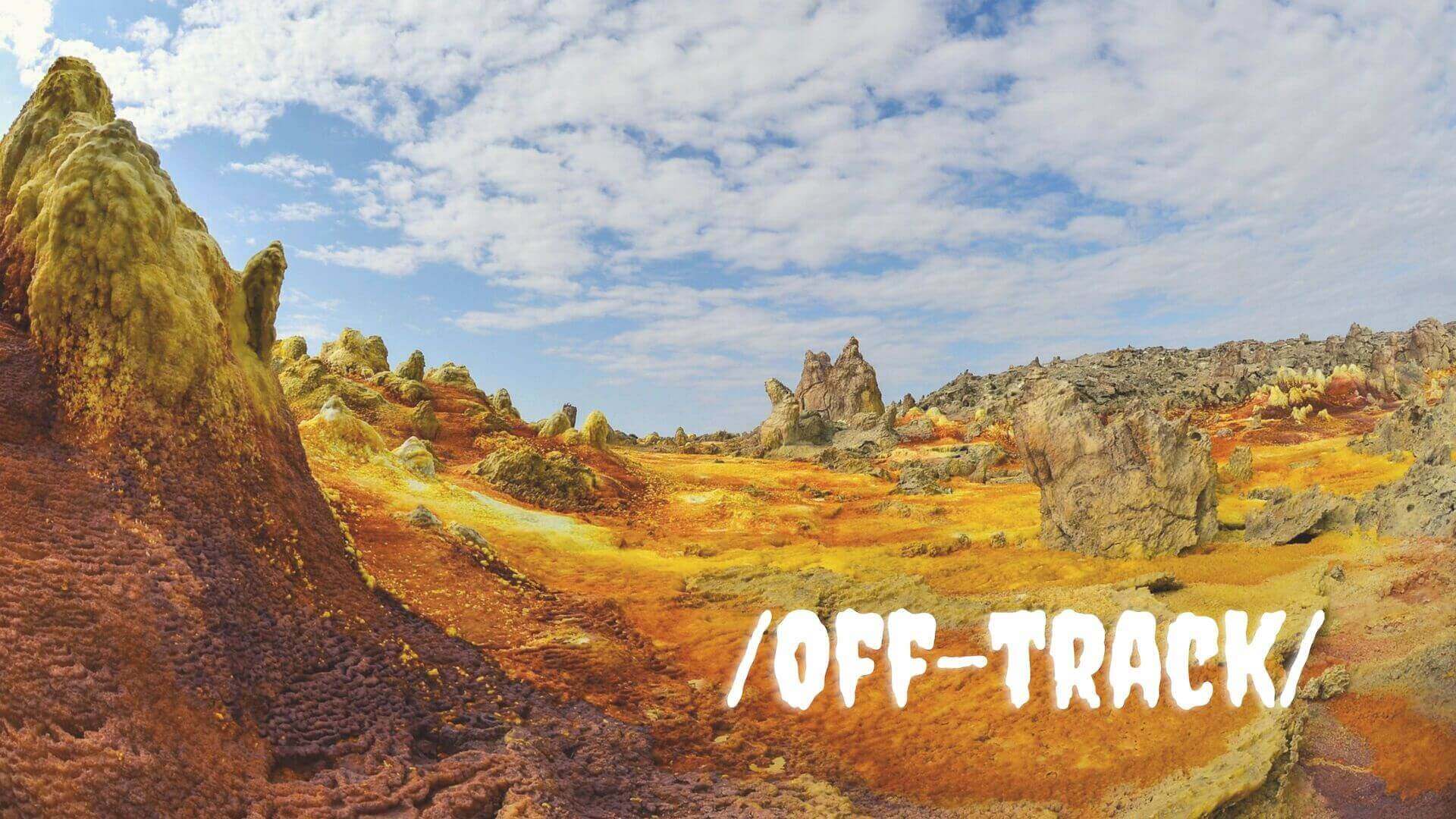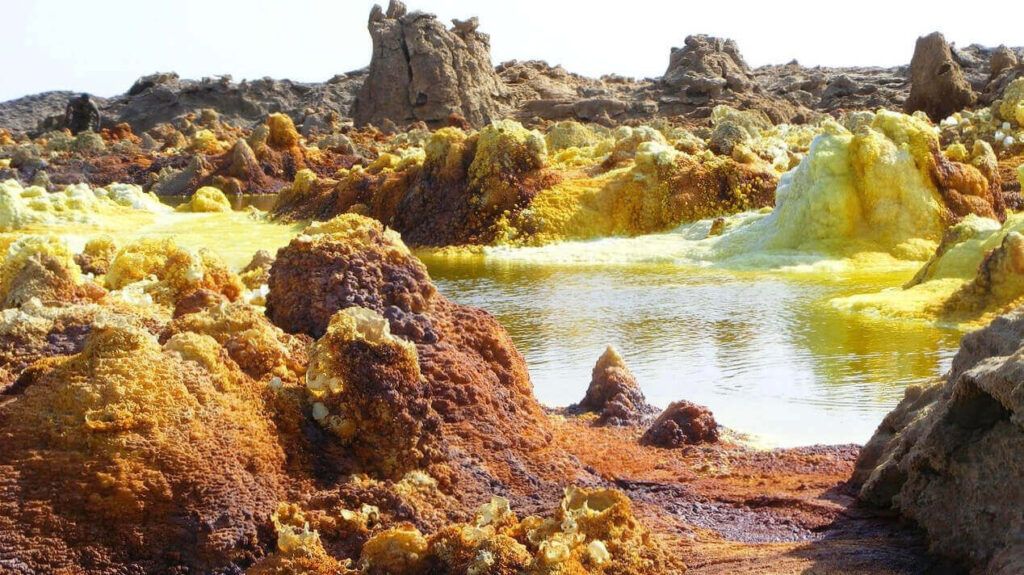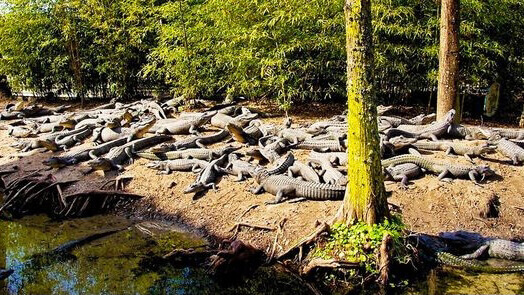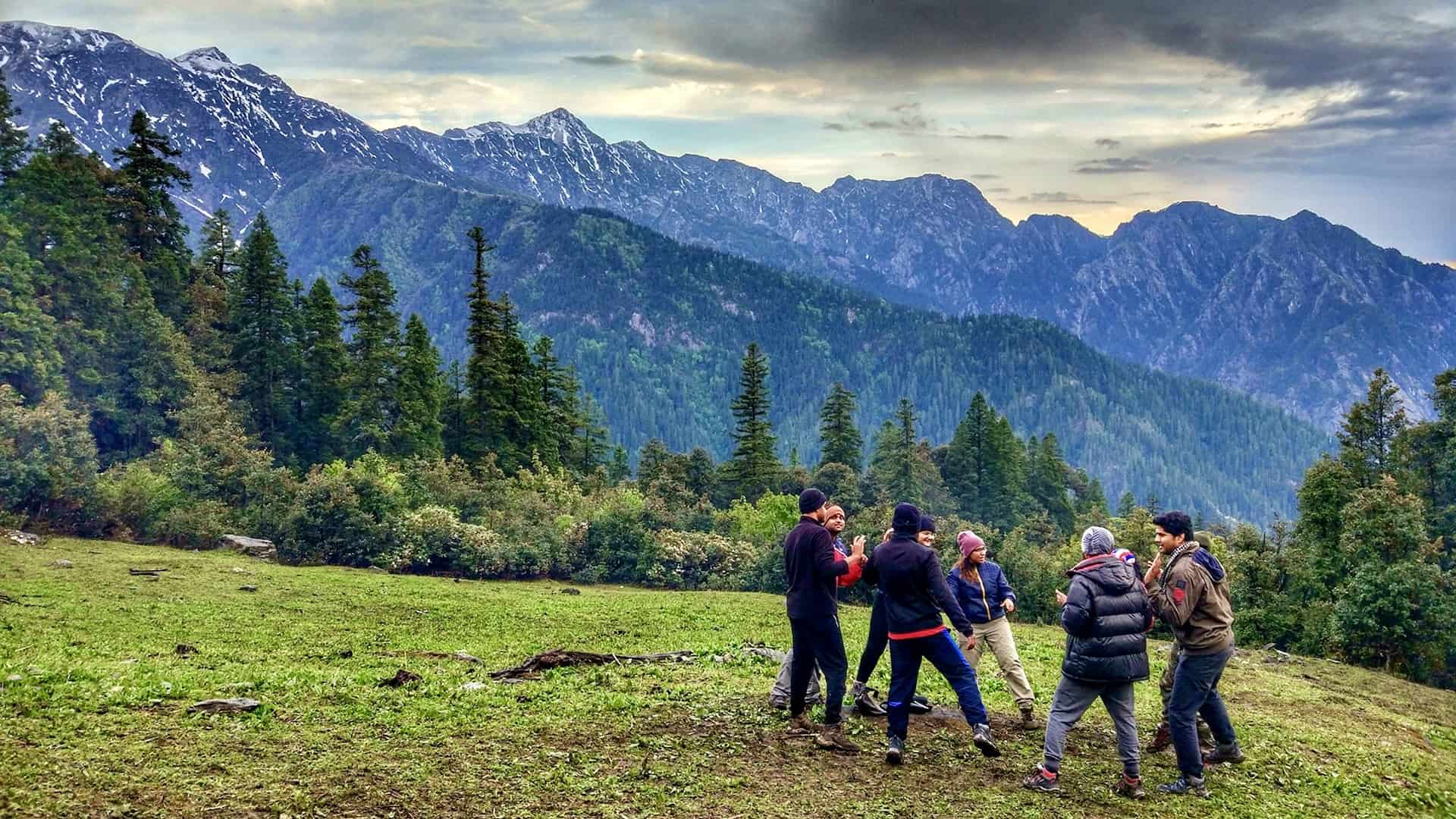
10 Deadly Places in the World You Can’t Visit
They are ‘the deadly places in the world’, ‘the most dangerous places on earth’, or ‘the forbidden places’, etc. For whatever ways that you call, below are places that you should not and cannot visit!
Ilha da Queimada Grande or Snake Island – Brazil



The island of Ilha da Queimada Grande locates about 40 km off the coast of São Paulo, Brazil. This island is also known as Snake Island because many poisonous snakes appear everywhere. There are an estimated 1-5 poisonous snakes for every 1m2 on the island. This makes Ilha da Queimada Grande the most dangerous island in the world.
Among the venomous snakes on the island, the most dangerous one is the golden lancehead viper. There are about 2,000-4,000 golden lancehead vipers living on the island. Moreover, they are the evolved ones.
Experts say that the golden lancehead viper is among the top venomous snakes in the world. Its venom can cause people bitten by snakes to have symptoms such as swelling, headache, vomiting, bruising, blood in the urine, intestinal bleeding, kidney failure,… With timely treatment, the person bitten by a golden lancehead viper can die in a short time. Thus, Brazilian authorities banned people from setting foot on the island.
Danakil Desert – Ethiopia

The Danakil Depression’s location in the Danakil Desert in Ethiopia – a country in Africa. It is considered the hottest place in the world. With temperatures ranging from 37 to 62oC, the Danakil depression is considered “the harshest land on Earth”, where the god of death never sleeps.
The soil in the Danakil Depression is unlike any other in the world. Because it is surrounded by sulfur, salts, and minerals, it has a distinctive smell. People liken Danakil to a blistering patch of the earth.
Additionally, because this land contains sulfur, not many places have fresh water to drink. For this land, water is extremely scarce and becomes a precious commodity. There are very few freshwater reservoirs and rainfall is very little most of the year.
Currently, this is the convergence of deadly disasters such as volcanoes, geysers, earthquakes, and extremely toxic superheated water.
Piton de la Fournaise – Reunion Island, France

Piton de la Fournaise is a shield volcano east of the island of Réunion, a region and overseas of France, in the Indian Ocean. Especially, it is currently one of the most active volcanoes in the world.
On April 22, 2021, two hikers died on a volcano. The island police said in a statement that the two men, both in their 20s, had been hiking on the Piton de la Fournaise volcano in the southeast of the island. However, the police found them dead near the crater.
North Sentinel Island – India

North Sentinel Island is an island in the middle of the Bay of Bengal, in the Indian Ocean. Also, it is home to the Sentinel tribe, the last remaining Stone Age tribe on Earth that has truly been isolated from the outside world for the past 30,000 years. Indeed, they are determined to maintain their lives in this way. Furthermore, the island’s natives use poisoned arrows, knives, spears, axes, stones, etc. to scare away any stranger who tries to approach.
In a tragedy, when an American Christian missionary, John Allen Chau, 26, tried to visit the island, he was hit by a poisoned arrow. Then, the Sentinel tribe dragged him by a rope on the beach until death.
Under Indian law, anyone within a 5 nautical mile radius of the island is considered illegal. As of 2017, even filming Aboriginal images on the Andaman Islands, which includes the North Sentinel Island, is illegal.
Miyakejima Island or Gas Mask Island – Japan


Nestled in a group of islands stretching from south to east in Japan’s Izu Shichitō archipelago, 110 miles southwest of Tokyo, Miyakejima Island often makes many people shy because of its dangerous territory. Yes, you must have a gas mask to live or to go there.
Miyakejima Island is home to a large number of volcanoes, of which Oyama volcano is the largest. It has erupted many times and is still listed as an active volcano in Japan today. Over the past 500 years, Oyama has erupted 13 times, including five times since the Meiji era.
Of these, the 1940 volcanic eruption killed 11 people. This was followed in 1962 without significant damage. By 1983, the explosion destroyed 400 homes, burned nearby forests, and buried a lake.
The most recent was in June 2000, when the Oyama volcano on the island turned and erupted again. By September, all 3,800 residents had been evacuated to Tokyo. The entire area is poisoned by gases erupting from the crater and most of it is sulfur in the amount of up to 42,000 tons.
However, a lot of people wanted to return to the island after that. Therefore, the village head on Miyakejima island decided to lift the evacuation order. Those who wish to return to the island must be responsible for their own health risks. As a result, the subsequent eruption killed about 600 people.
Ramree Island – Myanmar


Ramree, also known as Yangbye, is an island located off the coast of Rakhine State, southern Myanmar. It has a length of about 80 km and a width of about 32 km. This land is considered one of the most deadly places in the world.
Swamps are the natural habitat of saltwater crocodiles. Thousands of saltwater crocodiles have grown up and lived on the island since time immemorial. This is the largest reptile in the world. They can be more than 6 meters long and weigh more than 1 ton. Their speed, agility, and strength are things that can cause terror to humans.
During World War 2, 1,000 Japanese soldiers entered this crocodile swamp, of which, only 20 returned alive. As a result, this place became the land to mark the most haunting human massacre caused by animals in history.
Bikini Atoll – Republic of the Marshall Islands


Bikini is an atoll in the Marshall Islands but isolated in the Pacific Ocean and more than 2,000km east of the country of Papua New Guinea.
At the end of World War II, Washington realized that the island’s terrain and location in the middle of the ocean would be an ideal location for nuclear testing. Hence, at the beginning of Feb 1946, the US military ordered the residents of Bikini to evacuate to help end all cruel wars, according to US government propaganda.
In the two decades 40 and 50 in the last century, the US dropped 67 bombs on the Marshall Islands. Nevertheless, they did not expect that the radiation damage from these tests made Bikini a dead island. For more than 70 years, the people of Bikini Island still cannot return home because the environment is too radioactive.
Gruinard Island – Scotland

Image from Mike McBey on Flickr.

Image from Père Ubu on Flickr.
At the outbreak of World War II, British scientists chose Gruinard Island to test whether Anthrax would do great damage in a large-scale biological attack on the Nazis.
By the time the scientists decided to test Anthrax on Gruinard Island, it was officially a dead zone. The first “victims” to suffer this deadly germ bomb were 80 sheep. They were secretly transported to the island and silently experienced the pain caused by the Anthrax bacteria. Unexpectedly, the carcasses of slaughtered sheep were not properly handled and buried on the coast. As a result, it caused the island’s soil and water to be heavily polluted.
More than 7 decades have passed since the Anthrax bomb experiments on Gruinard Island. Now, Gruinard is still strongly isolated, becoming one of the most dangerous areas on the planet due to the number of spores. Anthrax with strong vitality is still hidden in the soil here, making the island one of the deadly places on earth.
Lake Natron – Tanzania


Located close to the border with Kenya, Lake Natron is made up of several mineral-rich springs. Therefore, the lake is highly alkaline, with a pH between 9 and 10.5 while normal seawater has a pH between 7 and 9. Besides, the temperature of the lake water can reach 60oC and is salty enough to poison most animals.
All these features make Lake Natron deadly. The high alkalinity causes the lake to appear red, pink, or even orange in the shallower parts, because of the microorganisms that live there.
Dead animals in the lake are turned into “statues” through the process of calcification. That resulted from the extreme sodium bicarbonate content in the lake. Except for a fish that has evolved to survive in the deadly waters of Lake Natron, no other species can survive near it.
Gate of Hell – Turkmenistan

Located in the middle of the Karakum desert, Turkmenistan, Central Asia, the Darvaza crater is known as the Gate to Hell. Actually, it was created by mistake during geological exploration in 1971. A drilling rig accidentally crashed into a giant underground natural gas cave. Although there were no casualties, the entire ground under the drill quickly collapsed and formed a giant hole with a diameter of about 70m.
Geologists deliberately set fires on the crater to prevent the spread of methane gas. They think the crater will only burn for a few weeks. However, the fire has been going on non-stop since 1971. Nearly 50 years later, experts still don’t know when the fire went out. The fire pit could stop burning tomorrow or another 100 years.
The Broad Life introduces to you great, inspirational books for your wanderlust. They aren’t just simple travel, each book recounts the author’s journey to discover and learn many awesome things from new civilizations and places.
> READ MORE: THE BEST TRAVEL BOOKS OF ALL TIME
IF YOU THINK THIS POST ABOUT DEADLY PLACES ON EARTH IS INTERESTING, PIN IT NOW!


30 Comments
-
-
Heather
Yikes! Those are some scary places. I hope no one visits them.
-
Alice Mola
I have heard about a few places on this list and wow, thanks for providing the history on them. As someone who lived in Japan and has visited many times, I’m surprised I had no idea about Miyakejima Island!
-
Escape Lounge
I really appreciate this article! A few of these areas were new to me but I’m happy I know about them now.
-
Beth
Holy cow! This was such an interesting read. I’ve seen a lot of posts about the best places to visit, but this is the first I’ve seen that tells you where you can’t go.
-
A Nation of Moms
What a unique list of places. They are definitely not worth the risk, but certainly fascinating to learn about.
-
Alita Pacio
What a list of fascinating yet dangerous places. I wouldn’t want to visit these places but it was nice knowing of them.
-
Rose Ann Sales
Wow! These are all really great and very unique pist of places! This is such a really interesting read
-
Fransic verso
Wow, this is very interesting, the nuclear can do such a thing. I’m curious what happened to the people they didnt come back yet.
-
Abida
I would like to visit at least one of the places listed here. It’s going to be so fun!
-
jen schreiner
WOW!!! This is truly a fascinating article. I didn’t realize there were so many beautiful yet deadly places to live in the world.
-
April
I had never heard of any of these deadly places! Snake Island sounds terrible and I’m probably going to have nightmares tonight!
-
Rosey Marie
I agree with April in the comment above. There are just some islands you DON’T want to set foot on.
-
Ntensibe Edgar
Wow….how is it that I am hearing of these places for my very first time? I am fascinated by Snake Island!
-
Blair villanueva
I would never dare to visit these places, and they are indeed forbidden due to many valid reasons. Let us not bother the natural living things in these places, and its natural habitat.







Christiana Acha
Wow! How fascinating! I literally held by breath throughout the post. I have never heard of these places, and I had no idea they existed. Thanks for sharing these.